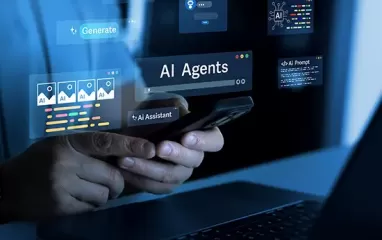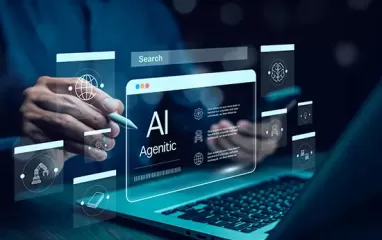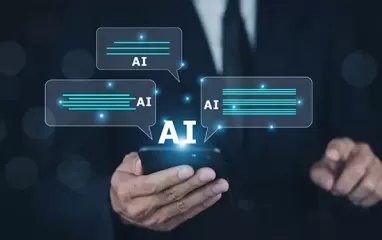Other recent blogs



Let's talk
Reach out, we'd love to hear from you!
Chatbots are the heart of conversational intelligence within an organization. However, chatbots are now evolving rapidly amid all the excitement of OpenAI's generative AI innovation like ChatGPT, and the transformative version of intelligent AI chatbots, revolutionizing the way businesses interact with customers.
Many business leaders believe that this evolution of simple rule-based chatbots to the smart generative AI chatbots, is a way forward to winning customer experience (CX), greater innovation, increased productivity, and better conversational intelligence. Also, the transformative capability of mimicking human-like responses in real-time marks a significant turning point in the realms of traditional chatbots-powered conversations.
In this blog, we will delve into how the evolution of chatbots into Generative AI chatbots can reshape the current business landscape and its significant potential in unlocking new frontiers of CX automations by pushing human realms further while taking assistive chatbot technology to a new level.
The great evolution of chatbots: From scripted responses to intelligent human-like conversations
The virtually assisted conversational bots, called chatbots, have come a long way since their inception in 1966. The launch of first-ever chatbot named Eliza by Joseph Weizenbaum at MIT Artificial Intelligence Laboratory had marked a significant milestone towards frictionless customer interaction. Following the lead, the early rule-based conversational chatbots like Parry and A.L.I.C.E enabled organizations to transform their CX capabilities by delivering response to predefined commands in real-time.

However, these early chatbots failed miserably because
- They didn't use artificial intelligence, cognitive perception, and machine learning effectively
- Lack ability to handle complex queries, plausible customer inquiries, and meaningful human conversations.
- They followed a rule-based decision tree with zero possibility of pre-training
- Inability to understand emotions and resolve personalized issues
The advancements of Natural Language Processing (NLP) and Machine Learning (ML) have spiked a transformative evolution in the realms of chatbots by enabling them understand and respond to user inputs more effectively. Intelligent chatbots like Microsoft Cortona, Google Assistant, Amazon Alexa, and Apple Siri as the key catalysts to this paradigm shift, enabled organizations to solving the most pressing issues by analyzing patterns in large datasets, training them from past interactions and deliver more accurate yet contextually relevant responses.
Further out on the cutting edge, breakthroughs like deep learning, neural networks, and Generative AI ChatGPT have brought significant improvements virtually assisted chatbot capabilities. If we talk about role of Generative AI like ChatGPT in particular in the holistic transformation of traditional chatbots, then it has alone acted as a linchpin enabling more engaging, and personalized conversations through better understanding of user intent, context, and nuances in language.
Generative AI empowering chatbots with contextual intelligence
Generative AI unlocks a new frontier of innovation in customer engagement experience at the intersection of machine learning, predictive models, and large language models to generate human-like text, images, and even music outputs based on patterns and human prompts. Businesses across all industries are seeing Generative AI as an next-gen approach to artificial intelligence, enabling them to automate both mundane and complex tasks.
The generative pre-trained transformers (GPT) models like OpenAI’s ChatGPT, BARD, and other machine learning models have been a game-changer in the realms of traditional chatbots for companies as they converse more convincingly with users by generating a structured human-sounding response to a natural language query. As a result, companies get valuable insights for better decision making capabilities while increasing process efficiency and delivering more personalized customer experiences.
What’s more? Unlike rule-based systems, these generative AI chatbots are powered by intelligent algorithms and large language processing capabilities, which make them smart enough to make processes agile to drive innovation and greater operational efficiencies in real-time.
Let’s delve deeper into some notable benefits of using generative AI-powered Chatbots
- Enhanced creativity by generating novel and contextually appropriate responses, which as a result fostering more engaging and creative conversations with users.
- Improved contextual understanding as generative AI models can analyze the context of a conversation more comprehensively, leading to more accurate and contextually relevant responses.
- Natural conversational flow as generative AI chatbots can maintain a more natural conversational flow, making interactions with users feel more human-like and seamless.

The business impact of Generative AI and ChatGPT
The business impact of harnessing the prowess of Generative AI and ChatGPT is nothing short of transformative. As the groundbreaking force, generative AI chatbots help businesses accelerate customer experiences by seamlessly blending human-like conversation and advanced data analysis. Let's gain a high-level understanding on the notable benefits of Generative AI and ChatGPT:
- Enhancing customer experience
Chatbots powered by Generative AI offer a superior customer experience by providing instant, personalized, and round-the-clock support. These chatbots can handle a wide range of queries, offer product recommendations, and guide users through complex processes, all while maintaining a conversational tone. By minimizing response times and delivering consistent service, businesses can improve customer satisfaction and loyalty.
- Personalization: Generative AI-powered chatbots can understand individual customer preferences and provide tailored recommendations, enhancing the customer experience and driving customer satisfaction.
- 24/7 Availability: Chatbots powered by generative AI can operate round the clock, providing instant support and information to customers at any time, improving response times and customer service.
- Streamlining operations via data-driven insights
Chatbots equipped with Generative AI can capture and analyze vast amounts of customer interaction data. These insights provide valuable feedback regarding customer preferences, pain points, and emerging trends. Businesses can leverage this data to enhance their products, services, and marketing strategies, leading to more informed decision-making and improved business outcomes.
- Automating Customer Interactions: Chatbots can handle routine customer inquiries, freeing up human agents to focus on more complex tasks, thereby increasing operational efficiency and reducing costs.
- Data Collection and Analysis: Chatbots powered by generative AI can collect valuable data on customer preferences, pain points, and buying behaviors, providing businesses with actionable insights for informed decision-making.
- Increased efficiency and cost savings
Generative AI-powered chatbots can handle multiple customer queries simultaneously, freeing up human agents to focus on complex or high-value tasks. This automation leads to increased operational efficiency and significant cost savings. Moreover, chatbots can handle repetitive inquiries, reducing the overall workload for customer support teams and enabling them to handle more strategic initiatives.
- Lead Generation and Conversion: Generative AI-powered chatbots can engage prospects in personalized conversations, capturing leads and nurturing them through the sales funnel, leading to increased conversion rates.
- Upselling and Cross-selling: Chatbots can suggest relevant products or services based on customer preferences, boosting upselling and cross-selling opportunities, and driving additional revenue.
Generative AI and the future of Chatbots
Generative AI chatbots are definitely reflecting the bright future of chatbots, with huge potential of evolution as a breakthrough technology. Some future possibilities include:
- Multilingual Chatbots: Generative AI can help chatbots overcome language barriers by facilitating real-time translation. Chatbots will be able to engage in conversations seamlessly across multiple languages, enabling businesses to expand their reach and cater to diverse customer bases.
- Emotional Intelligence: Advancements in Generative AI can equip chatbots with emotional intelligence, allowing them to detect and respond to human emotions. This empathetic capability will enable chatbots to provide more compassionate and personalized support, further enhancing the customer experience.
- Virtual and Augmented Reality: As Virtual and Augmented Reality technologies gain popularity, Generative AI-powered chatbots can be seamlessly integrated into these immersive experiences. This integration will enable users to interact with virtual characters in lifelike ways, leading to highly immersive and interactive customer engagements.
The Final Thoughts
Generative AI has propelled chatbots into a new era, transforming them into intelligent conversational agents capable of dynamic, contextually relevant, and creative interactions. With benefits ranging from improved customer experience and operational efficiency to driving sales and revenue growth, the integration of generative AI and chatbots holds immense potential for businesses across industries.
As the field continues to advance, businesses must with improved conversational abilities, personalized experiences, and round-the-clock support, chatbots powered by Generative AI are expected to become more prevalent, and indispensable tools for businesses. Therefore, businesses must prioritize ethical considerations to embrace the transformative power of generative AI and leverage chatbots like ChatGPT to stay ahead in the competitive landscape of the future.



